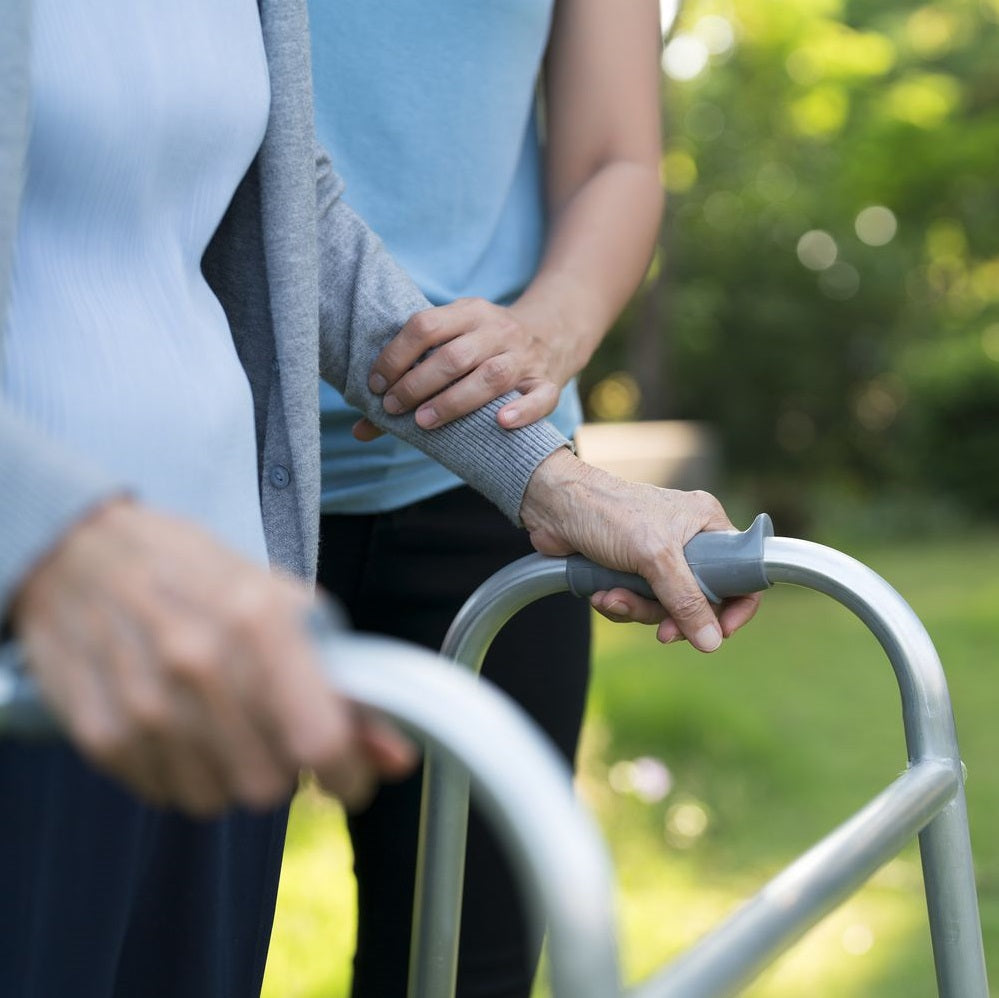What is Sarcopenia?
Sarcopenia is a medical condition characterized by the loss of skeletal muscle mass, strength, and function that occurs with aging. It is a natural process of aging, but it can be accelerated by factors such as physical inactivity, poor nutrition, and chronic illness.
As people age, they tend to lose muscle mass and strength, which can make them more susceptible to falls, fractures, and other injuries. Sarcopenia can also lead to decreased mobility, loss of independence, and an overall decrease in quality of life.
Sarcopenia can affect many different parts of the body, but it primarily affects the skeletal muscles, which are the muscles that are attached to the bones and responsible for movement. The following parts of the body are commonly affected by sarcopenia:
Lower limbs
Sarcopenia can cause weakness and atrophy in the muscles of the legs, leading to decreased mobility, difficulty walking, and an increased risk of falls.
Upper limbs
Sarcopenia can also affect the muscles of the arms, leading to weakness and decreased functional ability, such as difficulty lifting objects or performing tasks that require upper body strength.
Core muscles
The core muscles, including the abdominal and back muscles, are also affected by sarcopenia, which can lead to decreased stability and balance.
Respiratory muscles
Sarcopenia can weaken the respiratory muscles, which can lead to difficulty breathing and increased risk of respiratory infections.
Swallowing muscles
Sarcopenia can also affect the muscles involved in swallowing, leading to difficulty swallowing and an increased risk of aspiration.
It's important to note that sarcopenia can affect different individuals in different ways, and the specific areas of the body that are affected can vary depending on the underlying causes of the condition.
Symptoms of sarcopenia
The gradual loss of muscle mass, strength, and function, can lead to a range of symptoms. The symptoms of sarcopenia may include:
- Reduced muscle strength and endurance
- Weakness, particularly in the legs and arms
- Difficulty performing physical tasks that were once easy
- Fatigue and a general feeling of weakness
- Loss of muscle tone and definition
- Changes in gait or walking pattern
- Increased risk of falls and fractures
- Loss of independence due to decreased mobility
- Reduced quality of life and overall health.
It's important to note that the symptoms of sarcopenia may be mild at first and may not be noticeable until significant muscle loss has occurred. Therefore, it's essential to maintain a healthy lifestyle and engage in regular physical activity to prevent and manage sarcopenia.
Diagnosis of sarcopenia
The diagnosis of sarcopenia typically involves a combination of medical history, physical examination, and tests of muscle strength and function. Here are some common methods used to diagnose sarcopenia:
Medical history
A healthcare provider will ask about any symptoms and risk factors for sarcopenia, such as age, physical inactivity, poor nutrition, and chronic illness.
Physical examination
A healthcare provider will examine the patient's muscle mass, strength, and function by checking for muscle wasting, weakness, and poor balance.
Dual-energy X-ray absorptiometry (DXA)
DXA is a non-invasive imaging technique that measures bone density, body composition, and muscle mass. It can be used to estimate the amount of muscle mass in the body and track changes over time.
Bioelectrical impedance analysis (BIA)
BIA is a method that measures body composition by passing a low-level electrical current through the body. It can be used to estimate muscle mass and track changes over time.
Grip strength
A healthcare provider may use a hand-held dynamometer to measure grip strength, which is a good indicator of overall muscle strength.
Gait speed
A healthcare provider may also measure how quickly a patient can walk a specific distance, which is a good indicator of mobility and physical function.
Other tests
Other tests, such as blood tests to measure muscle-specific proteins or hormone levels, may also be used to diagnose sarcopenia or rule out other medical conditions that may cause similar symptoms.
Treatment of sarcopenia
The treatment of sarcopenia typically involves a combination of lifestyle modifications, exercise, and medication. Here are some common treatment options for sarcopenia:
Exercise
Resistance training and aerobic exercise can help build muscle mass, improve muscle strength, and enhance physical function. A healthcare provider or a certified exercise specialist can recommend a safe and effective exercise program based on individual needs and fitness levels.
Nutrition
A balanced diet with adequate protein intake can help support muscle growth and repair. A healthcare provider or a registered dietitian can provide personalized nutrition recommendations based on individual needs and health status.
Medications
In some cases, medications such as anabolic steroids or growth hormone may be prescribed to help counteract muscle loss. These medications may be used in specific cases under the guidance of a healthcare provider.
Fall prevention
Sarcopenia can increase the risk of falls and fractures, so it's important to take steps to prevent falls, such as removing hazards in the home, wearing appropriate footwear, and using assistive devices if needed.
Management of underlying medical conditions
Sarcopenia can be accelerated by chronic illnesses such as diabetes, heart disease, or cancer. Therefore, it's essential to manage any underlying medical conditions that may contribute to muscle loss.
Lifestyle modifications
Certain lifestyle factors, such as physical inactivity and smoking, can accelerate muscle loss. Therefore, it's important to make lifestyle modifications such as quitting smoking, engaging in regular physical activity, and reducing sedentary behavior to prevent or manage sarcopenia.
It's important to note that the treatment of sarcopenia should be personalized based on individual needs and health status. A healthcare provider can provide personalized recommendations for the management of sarcopenia.
Prevention of sarcopenia
There are several lifestyle changes and habits that can help prevent or delay the onset of sarcopenia. Here are some tips for preventing sarcopenia:
Engage in regular exercise
Resistance training and aerobic exercise can help build and maintain muscle mass and strength. Aim for at least 150 minutes of moderate-intensity aerobic exercise per week, along with two or more days of resistance training per week.
Eat a balanced diet
A diet rich in protein, healthy fats, and whole grains can help support muscle growth and repair. Aim for at least 1.2-1.6 grams of protein per kilogram of body weight per day, and eat a variety of fruits, vegetables, and whole grains.
Avoid sedentary behavior
Prolonged periods of sitting or inactivity can accelerate muscle loss. Try to incorporate more physical activity into your daily routine, such as taking frequent breaks from sitting or using a standing desk.
Get enough sleep
Sleep is essential for muscle repair and recovery. Aim for 7-9 hours of sleep per night.
Manage chronic illnesses
Chronic illnesses such as diabetes, heart disease, and cancer can accelerate muscle loss. It's important to manage any underlying medical conditions to prevent or delay the onset of sarcopenia.
Quit smoking
Smoking can accelerate muscle loss and increase the risk of chronic illnesses. Quitting smoking can help prevent or delay the onset of sarcopenia.
Maintain a healthy weight
Being overweight or obese can put extra strain on the muscles and increase the risk of muscle loss. Maintaining a healthy weight can help prevent or delay the onset of sarcopenia.
Conclusion
Making healthy lifestyle choices such as engaging in regular exercise, eating a balanced diet, avoiding sedentary behavior, getting enough sleep, managing chronic illnesses, quitting smoking, and maintaining a healthy weight can help prevent or delay the onset of sarcopenia.
OrthoRelieve carries a range of back braces that can help relieve back pain caused by various conditions, including sarcopenia. Check them out here:
https://orthorelieve.com/collections/back-pain-relief
Disclaimer: The information provided in this article is for educational and informational purposes only and is not intended to be a substitute for professional medical advice, diagnosis, or treatment. Always seek the advice of a qualified healthcare provider with any questions you may have regarding a medical condition. Never disregard professional medical advice or delay in seeking it because of something you have read in this article.



